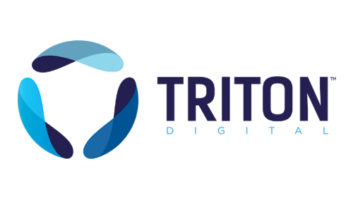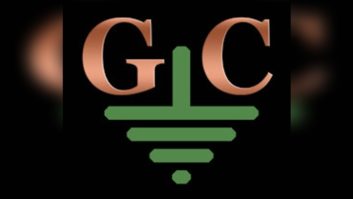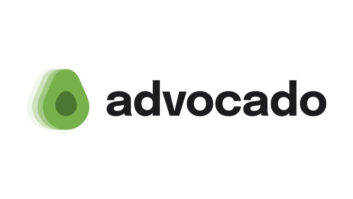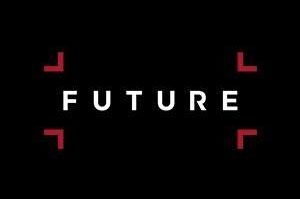Acquisition of The Radio Experience Marks Emphasis on Role of Data in Radio’s Future
QUINCY, Ill. Broadcast Electronics and broadcast data entrepreneur Allen Hartle say they want to make it easier for stations to begin using RDS in this country and to step up their data capabilities with HD Radio.
BE has purchased Hartle’s company, an announcement that presages a product unveiling at NAB2005. It acquired the assets of The Radio Experience in late January. The parties declined to announce the monetary terms, including the cost, who holds rights to or would benefit from patents involved and whether any patent applications remain pending.
Hartle was sole owner of The Radio Experience, which is based in Bellevue, Wash.; its employees will remain there. He declined to disclose his company’s annual revenue. BE, based in Quincy, Ill, is privately held.
‘A good fit’
The principals were clear, however, about what they believe are benefits of the deal. They said Radio Experience products fit into BE’s planned data offerings. Because it is acquiring an existing RDS line, BE can get new products to market faster. (The U.S. version of the data standard technically is called RBDS but the industry generally refers to it as RDS.)
“We are integrating it (The Radio Experience) with our offerings in this area,” said BE President John Pedlow. “This is a link in our commitment to prove end-to-end solutions for HD Radio. We think the data-related services are going to be an important part of that as we move forward. Bringing Allen and The Radio Experience products and services into the BE fold, we think, is an important step up for us in being able to get where we think we need to go and the industry needs to go.”
BE makes products for radio broadcasters including program generation, audio and data management, interfacility transport and analog and digital transmission.
Pedlow credits Hartle’s persistence for the recent spike in radio’s interest in RDS. Analog RDS is “the perfect stepping stone” to where BE believes the marketplace can go with HD Radio and its associated data capabilities, he said.
For Hartle, selling to BE is a chance to see his company, founded in 2001, grow further, building on work begun in 1992 with an RDS billboard. Hartle was active in the early push of RDS in the 1990s, when the EIA gave away 500 REI RDS encoders. His design group eventually went onto other projects, but in 2001, he says, he “rediscovered” his radio roots and decided to upgrade the RDS products.
After almost a decade in which the RDS format was stagnant in the United States, his firm made headlines in April 2003 when Entercom Communications placed an order to equip 54 FM stations with its Dynamic Data Initiative technology. A number of radio groups followed suit within months using RDS gear from Hartle’s firm and other vendors. Some 150 stations now use Radio Experience products.
“Having a service, sales and fulfillment department, it’s an incredible opportunity for me to grow the business,” said Hartle of the sale to BE. “My goals are to see the greatest number of radio stations using our inventions, and BE can make that possible for us.”
Additionally, he said, his company has been suggesting to stations that they use a set of products to leverage the data capabilities of RDS, HD Radio and the Web. Broadcasters also need to consider themselves as datacasters as well as broadcasters. “We needed a larger voice, basically to help get those messages out,” said Hartle.
Hartle and three others join BE in what is now called the Broadcast Data Services group within its Studio Systems division, managed by Ray Miklius. Hartle joins BE as director of development for the data group. BE executives said they couldn’t state exactly how many of its approximately 150 employees work in that group because staffers also work on other products.
BE intends to retain the Radio Experience name on the latter’s products and use the brand on new ones.
Start from the beginning
The companies declined to discuss planned products in detail but offered some clues. For example, Hartle said, “It seems important to give the early adopters beginning, entry-level products, like RDS and the Now Playing products to support that because those same people are starting there and widening their focus as time goes on.”
“This is not just going to provide solutions for those stations sinking a lot of money into HD Radio, but stations that, for the short-term and mid-term, may remain analog,” said Neil Glassman, BE vice president for strategic marketing.
“We’re looking at helping them enhance what they’re doing and building up their data chops, because a lot of those things like real-time traffic and a host of things that both BE and The Radio Experience have been promoting were provided by other content providers, are ways to get listeners to stick around longer and provide additional vehicles for revenue for the station.”
Such groups as Infinity, Entercom and Susquehanna use Radio Experience products. Since 2002, these groups have been running applications developed by The Radio Experience to send “now playing” information to text-enabled RBDS radios, HD Radio receivers and station Web sites.
Pedlow said these groups are BE customers as well. He and Hartle stressed that they intend to keep Radio Experience products compatible with major brands of automation software, not just BE’s AudioVault.
The executives were frank about what the acquisition would mean for BE’s new product, Radio Data Dimensions. Introduced at NAB2004, RDD is a software suite for RDS and HD Radio data applications. It allows stations to generate and manage internal data, program-associate data and near-PAD data. It can also generate secondary audio data. Third-party data or advanced data applications, such as traffic information and navigation, are also managed using the RDD.
Glassman said the introduction of RDD was “a little too much, too soon. I think we may have anticipated the market was ready for a total data offering, when, in fact, the market really needs a range of things.” RDD products won’t go away, but they will be repackaged with input from the new, merged data group and get a new name, said Glassman.
The new offerings, he said, would be easier to implement, more self-educating; and they would provide stations a clear upgrade path as their needs expand.
And beyond the spring NAB?
Hartle referred to a pilot project in Boston using digital downloads and a mobile application. His team put Radio Experience products on Infinity’s WBMX(FM), including a Web site and the “previously played” function, and added a cell phone to the mix.
“The people in the market would call a special number to listen to the station personality greet them and then hang up,” said Hartle. “Moments later their cell phones receives a text message, showing them the ‘Now Playing’ and the three previous songs. They wanted to provide this to their listeners free of charge for the sake of listener loyalty.
“Entering the mobile space is important; you’re touching a lot more people. The way the radio stations looked at it, what we’re doing is enabling them to extend their brand onto another technology platform.”
Hartle is co-chair of the RBDS Subcommittee of the National Radio Systems Committee. The group is working to expand the standard to include HD Radio PAD-like specifications; the benefit, he said, is that a receiver manufacturer would be able to design a radio knowing that there would be RDS data in specific fields.











